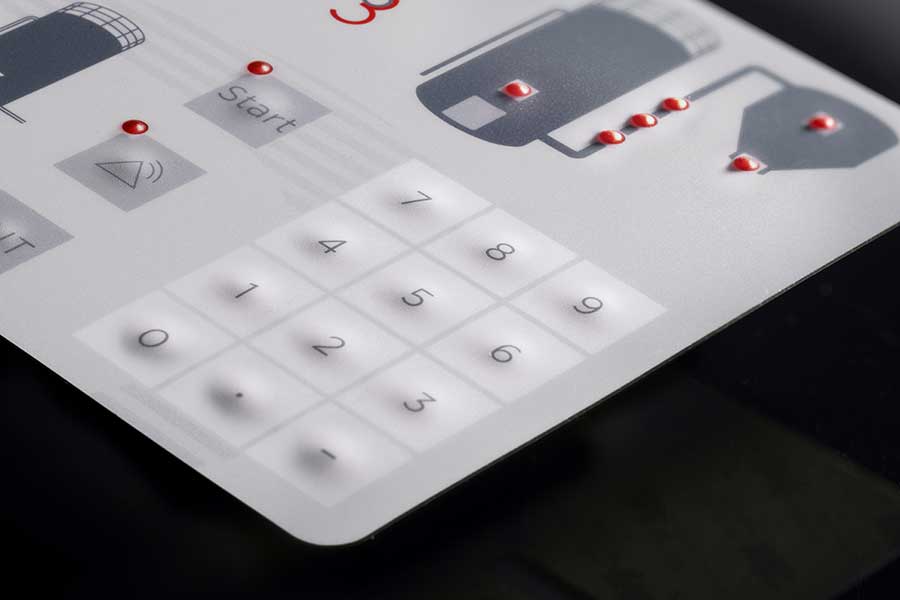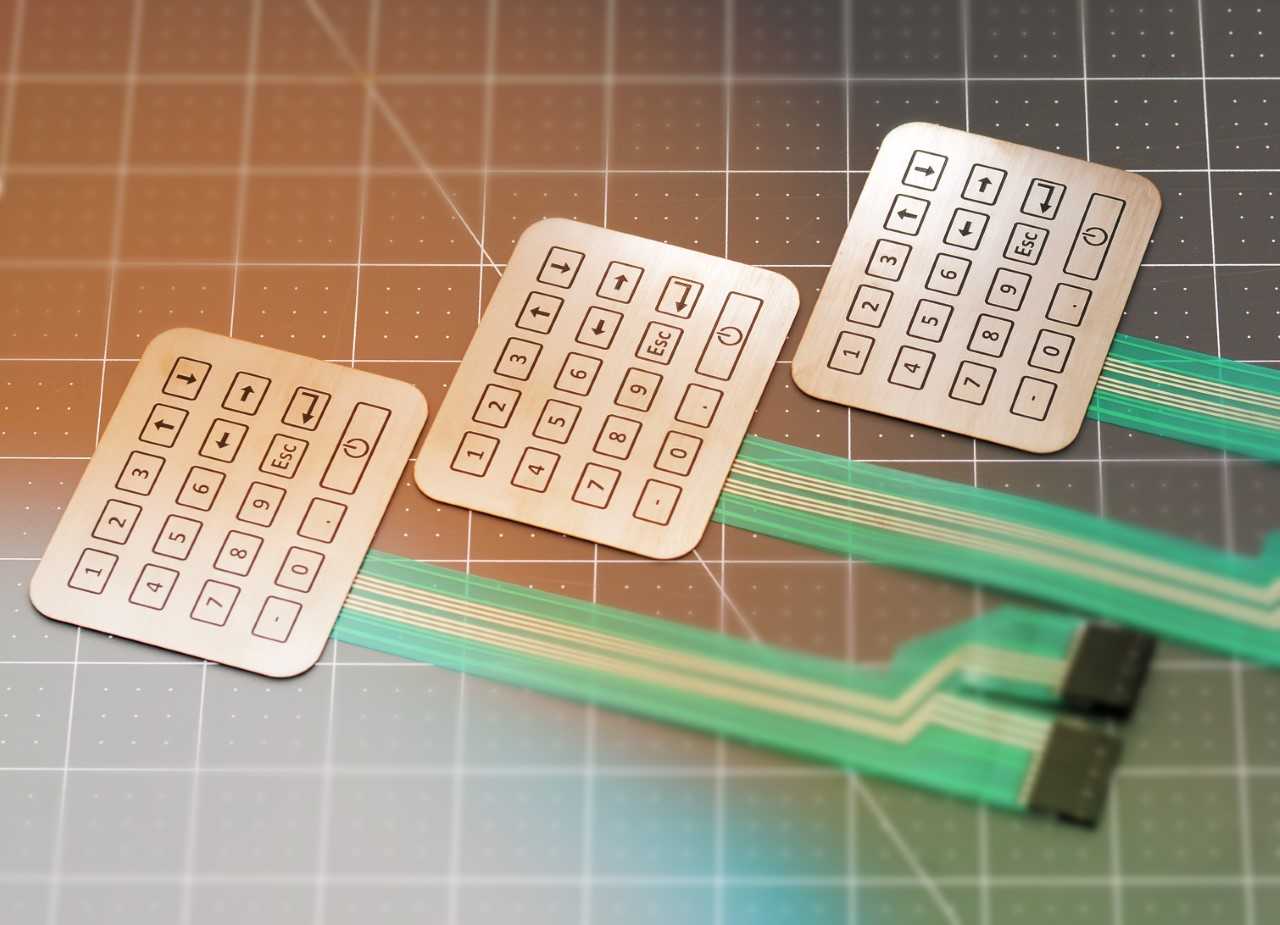Top companies often rely on a skilled membrane switch manufacturer to deliver reliable results.
Top companies often rely on a skilled membrane switch manufacturer to deliver reliable results.
Blog Article
Everything About Membrane Switch Over: Comprehending Its Design and Performance
When you assume regarding the control interfaces in modern tools, membrane buttons commonly enter your mind. These parts are greater than just buttons; they blend style and performance perfectly. Comprehending how they work and what makes them efficient can transform your viewpoint on day-to-day electronic devices. Yet, there are subtleties to their style and performance that you may not know. Allow's discover what sets membrane switches apart from various other control systems.
What Are Membrane Switches?

Membrane switches can additionally be customized concerning shape, size, and graphics, allowing producers to create one-of-a-kind user interfaces customized to particular items. In general, membrane switches play a considerable role in improving user experience throughout a large selection of applications.
Just How Membrane Changes Job
When you push a trick on a membrane switch, it activates a straightforward yet efficient device. The leading layer, commonly made from adaptable material, pushes down onto a conductive layer under it. This activity bridges the gap between conductive traces, completing an electrical circuit. As quickly as the circuit closes, it sends out a signal to the device's controller, which interprets your input.
You'll notice that the tactile comments differs based upon the button style, providing either a soft click or an extra obvious response. Once you launch the key, the membrane layer returns to its original setting, reopening the circuit and stopping the signal. This procedure takes place practically instantaneously, guaranteeing a responsive individual experience.
Membrane layer switches are prominent because of their durability and resistance to dust and dampness, making them perfect for numerous applications, from house home appliances to clinical devices. Recognizing this procedure aids you value their extensive use.
Trick Elements of Membrane Buttons
Recognizing the vital parts of membrane layer switches is basic for grasping their performance and style. At the core, you'll locate the visuals overlay, which gives the aesthetic user interface for customers. Below that, there's a spacer layer that divides the circuit layers, making sure that they do not make get in touch with up until pressed. The circuit layer is where the magic happens; it contains conductive traces that complete the circuit when you push the button. Another important component is the glue backing, permitting the button to abide by surfaces safely. Ultimately, the protective layer guards against ecological elements and wear, expanding the button's life expectancy. Each element plays a substantial role in guaranteeing trusted efficiency and user communication. By understanding these parts, you'll get insight right into exactly how membrane switches operate and their value in various applications.
Materials Utilized in Membrane Switch Design
The efficiency and toughness of membrane switches heavily depend on the products used in their layout. You generally come across polyester and polycarbonate as key substrates due to their excellent stamina and versatility. These products stand up to scratches and chemicals, making them excellent for demanding atmospheres.
The conductive layers often utilize silver or carbon, selected for their dependability and conductivity. membrane switch manufacturer. Silver supplies superior performance, while carbon is an affordable alternative. For the overlay, you might think about a matte or glossy finish, depending on your visual needs and user experience
Adhesives play an important function as well; they bond layers safely and ensure long life. Ensure to choose adhesives that stand up to ecological elements like temperature and humidity. Lastly, don't neglect the value of a good printing method for graphics, as it boosts both capability and aesthetic allure. Selecting the ideal materials will certainly assure your membrane switch stands the examination of time.
Style Factors To Consider for Membrane Buttons
While creating membrane switches, it's important to think about numerous aspects that affect their performance and customer experience. Start by concentrating on the format and switch size; make certain they're instinctive and easy to navigate. Take into consideration the responsive comments you intend to supply-- will individuals require a visible click or a softer touch? Additionally, think of the materials you'll use, as they'll influence resilience and visual appeals.
Validate your style fits ecological variables, like dampness or temperature variations, which might influence performance. By meticulously thinking about these aspects, you'll create a membrane switch that improves use and satisfaction.
Applications of Membrane Layer Buttons
Membrane layer switches are functional parts located in numerous applications, from commercial tools to customer electronics. You'll see their effect in machines that require durable interfaces and in tools that gain from sleek designs. Understanding these applications aids you appreciate the performance and practicality of membrane layer buttons in daily technology.
Industrial Equipment Usage
When you're wanting to enhance the functionality of commercial equipment, membrane layer switches provide a reliable option that incorporates toughness with easy to use layout. These switches are ideal for severe environments, giving resistance to dust, moisture, and chemicals. You'll find them in control panels for making devices, cooling and heating systems, and clinical devices, where precision and responsiveness are crucial. Their have a peek at this site reduced profile suggests they fit perfectly right into different devices, conserving useful space while keeping convenience of usage. With adjustable graphics and backlighting choices, you can create an user-friendly interface for operators, improving performance and safety and security. Plus, their lengthy life expectancy lowers maintenance expenses, making them a clever financial investment for your industrial applications. Embrace membrane layer switches to improve your procedures and improve total efficiency.
Consumer Electronics Assimilation
In the domain of consumer electronics, membrane buttons play an essential function in enhancing user interaction and device capability. You'll locate them in devices like microwaves, remote controls, and gaming consoles, providing a smooth method to interact with modern technology. Their sleek design enables for easy integration right into various items, making check my site controls user-friendly and easy to use. With their capability to integrate graphics and backlighting, you can appreciate a modern visual that enhances the device's total appearance. Membrane switches additionally ensure durability and resistance to dust and dampness, prolonging the life-span of your electronic devices. By picking membrane buttons, you boost not simply the capability yet additionally the style of your devices, making daily interactions smooth and delightful.
Benefits and Negative Aspects of Membrane Layer Buttons
While membrane buttons use a range of advantages, they likewise include some downsides that you ought to consider. One substantial benefit is their small style, making them optimal for space-constrained applications. They're additionally affordable, offering a long lasting remedy with a low manufacturing expense. On top of that, their smooth surface is very easy to tidy, improving health in settings like healthcare facilities.

Nevertheless, there are downsides. Membrane layer switches can have a much shorter life-span compared to mechanical switches, specifically under heavy usage. They can likewise be much less tactile, which might influence individual responses throughout procedure. If damaged, fixing them can be challenging and usually requires full replacement. Eventually, their level of sensitivity to severe temperatures and ecological problems might restrict their efficiency in particular settings. Stabilizing these benefits and drawbacks will assist you identify if membrane buttons are the appropriate fit for your job.
Frequently Asked Concerns
How Much Time Do Membrane Changes Generally Last?
Membrane layer switches over typically last between 5 to one decade, relying on use and environmental problems. You'll intend to examine variables like wear, direct exposure to wetness, and temperature level variations to determine their long life efficiently.
Can Membrane Layer Switches Over Be Customized for Certain Styles?
Yes, you can customize membrane layer switches he said to fit certain styles (membrane switch manufacturer). You'll have the flexibility to select colors, shapes, and layouts that match your project's requirements, ensuring they blend perfectly with your general visual
What Is the Expense Range for Membrane Layer Switch Over Manufacturing?
The price range for membrane button production typically falls between $1 and $10 each, depending on elements like style complexity, amount, and materials. You can obtain quotes from makers to discover the very best alternative.

Are Membrane Layer Changes Water-proof or Resistant?
Membrane layer buttons can be designed to be waterproof or resistant, depending on materials utilized and building approaches. If you require them for damp environments, ensure you define those requirements during the style procedure.
Just How Do Membrane Layer Switches Over Compare to Conventional Buttons?
Membrane layer buttons are typically thinner and extra adaptable than typical switches, using a sleek layout. They're typically easier to clean up and incorporate, but might not supply the responsive feedback you're utilized to with mechanical options.
Final thought

Report this page